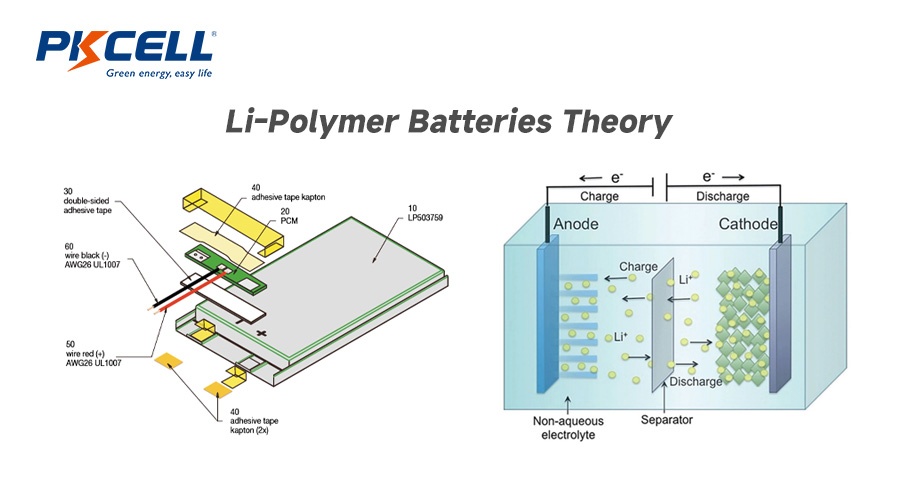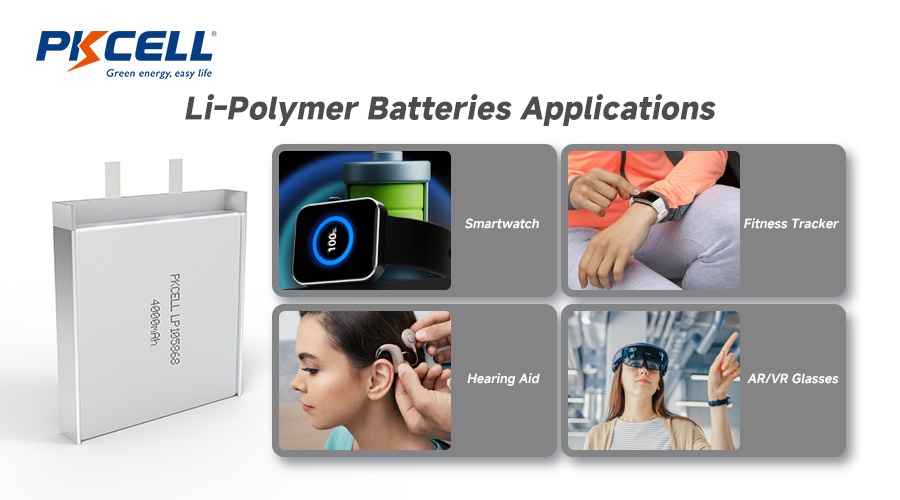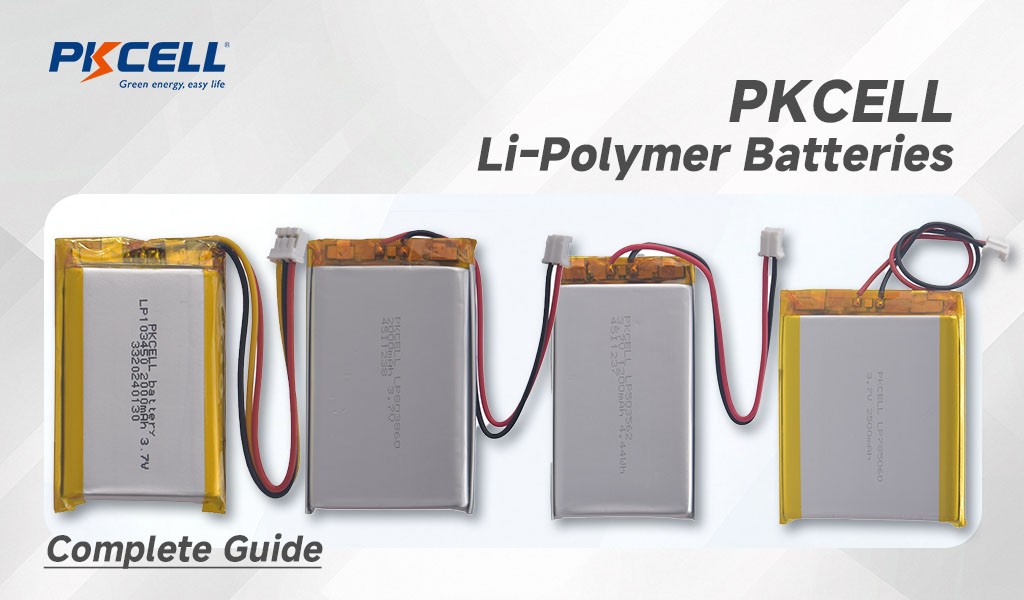Key Highlights
- Learn the right ways to select the best option for a good fit Li-Polymer battery for wearable devices, avoiding bad decisions that can hinder performance.
- Understand the variety of offers available in the market that cater to different needs, from high-capacity options to flexible designs.
- Explore how testing apps and core features, through straightforward task descriptions, help in making a legitimate choice.
- Discover essential safety features that prevent scams and ensure durability.
- Gain knowledge on career path-like planning for managing device requirements while enjoying lots of fun in everyday usage.
Next, let’s examine some introductory concepts in wearable device batteries.
Introduction
Selecting the right battery for wearable devices can significantly affect performance and user experience. As technology continues to evolve, understanding the nuances of li-polymer batteries becomes essential. These batteries offer a plethora of advantages that can align with the demands of modern wearables, making it a straightforward task to find a good fit. This guide breaks down key considerations, safety features, and performance metrics, ensuring a comprehensive approach to making informed decisions for your device’s energy needs.
Understanding Li-Polymer Batteries in Wearable Devices
 Li-polymer batteries have revolutionized the power supply in wearable devices, offering a lightweight and flexible solution. Their chemical composition allows for a higher energy density, thereby providing manufacturers the opportunity to design thinner, more ergonomic devices. The inherent safety features of Li-polymer batteries, such as reduced risk of leakage and thermal runaway, make them a reliable choice. As wearables continue to advance, understanding the nuances of these batteries becomes imperative for optimal performance and user satisfaction.
Li-polymer batteries have revolutionized the power supply in wearable devices, offering a lightweight and flexible solution. Their chemical composition allows for a higher energy density, thereby providing manufacturers the opportunity to design thinner, more ergonomic devices. The inherent safety features of Li-polymer batteries, such as reduced risk of leakage and thermal runaway, make them a reliable choice. As wearables continue to advance, understanding the nuances of these batteries becomes imperative for optimal performance and user satisfaction.
What is a Li-Polymer Battery?
A Li-Polymer battery (LiPo) is a type of rechargeable battery that uses a polymer electrolyte instead of a liquid one. Known for their lightweight and flexible design, they are commonly used in wearable devices, providing high energy density and adaptability for various form factors.
Advantages of Li-Polymer Batteries for Wearables
Li-polymer batteries offer several advantages for wearable devices, making them a highly suitable choice.
- Lightweight and Flexible Design: LiPo batteries’ lightweight and flexible nature allows for seamless integration into compact wearable devices, accommodating various unique form factors.
- High Energy Density for Extended Use: With their superior energy density, LiPo batteries provide devices with longer operating times, reducing the need for frequent recharging.
- Versatile Shapes and Sizes: These batteries support customization in a wide range of shapes and sizes, fitting the specific design requirements of wearables without compromising functionality.
- Excellent Cycle Life and Durability: The robust cycle life of LiPo batteries ensures their durability, effectively mitigating performance degradation over time.
- Efficient and Highly Adaptable: Overall, LiPo batteries offer a blend of efficiency and high adaptability, meeting the evolving demands of modern wearable technology.
Key Factors to Consider When Choosing a Li-Polymer Battery
Battery capacity should align with your device’s requirements to deliver optimal performance. Assessing size, shape, and flexibility is crucial for ensuring the battery fits seamlessly into the design of wearable devices. Evaluating these key factors not only addresses functional needs but also contributes to user experience. Prioritizing compatibility and safety standards during selection will help avoid potential pitfalls, ensuring your choice reflects a strategic decision that aligns with your initial goals for the wearable application.
Battery Capacity and Device Requirements
Determining battery capacity involves evaluating the energy demands of wearable devices. Users often seek a good fit between the device’s functions and the battery’s output, ensuring optimal performance. Consider how intensive applications, like testing apps or social media features, might influence overall consumption. Additionally, selecting the right battery capacity can prevent poor performance or device failure, which could lead to a bad decision in the long run. Assessing these requirements is critical for achieving the initial goal of longevity and reliability.
Size, Shape, and Flexibility for Wearable Design
In the realm of wearable devices, the size, shape, and flexibility of Li-Polymer batteries are crucial for optimal design and functionality. These batteries often come in various configurations, allowing for seamless integration into compact designs without compromising performance. Their inherent flexibility makes them ideal for contouring to the device’s form factor, whether it’s a smartwatch or fitness tracker. Prioritizing these characteristics ensures that the battery fits well within the user’s lifestyle while maintaining efficiency and user comfort.
Your Step-by-Step Guide to Wearable Battery Selection
Choosing the right LiPo battery for your wearable device is critical. Follow these key steps for optimal performance and integration:
1. Define Your Wearable’s Power Needs
Start by precisely outlining your device’s power profile. Estimate current draws (average and peak) and set clear runtime goals. Also, consider charging speed and any environmental factors your wearable will encounter. For example:

| Wearable Device Type | Core Device Characteristics (Battery Demand) | Power Profile & Environment (Key Considerations) | Recommended LiPo Battery Type (PKCELL Example) | Reason for Recommendation |
| Smartwatch | Compact, multi-functional, daily charge, slim design | Avg/Peak Current: Moderate-High; Runtime Goal: 1-3 days; Charging Speed: Fast; Environment: Daily wear, sweat | Thin/Curved High Energy Density LiPo (e.g., PKCELL LP402030 or custom) | Balances battery life with slim design; high energy density supports multiple functions; thin/curved fits casing. |
| Fitness Tracker | Extremely small, long wear, lightweight, extended life | Avg/Peak Current: Low-Moderate; Runtime Goal: 3-7 days; Charging Speed: Standard; Environment: Sweat, varied temps | Ultra-Miniature/Flexible LiPo (e.g., PKCELL LP401230, LP402025, or custom) | Extremely lightweight and comfortable; small size with high energy density for long runtimes; flexible for wear. |
| Hearing Aid | Micro, ultra-light, very low power, long standby, high safety | Avg/Peak Current: Very Low; Runtime Goal: 1-3 weeks; Charging Speed: Slow/Standard; Environment: Stable body temp, dry | Micro/Custom Irregular Shape LiPo (e.g., LP100810, LP100812, or custom) | Meets extreme space limits and provides ultra-long, stable power; high stability ensures safety. |
| AR/VR Glasses | High power, large capacity needed, weight balance, high peak current | Avg/Peak Current: High; Runtime Goal: 2-4 hours; Charging Speed: Fast; Environment: Indoor/Outdoor, high heat | High Capacity/Multi-Pack LiPo (e.g., PKCELL LP603450, LP703496 or custom multi-pack solutions) | Supports high-performance computing/displays; optimizes weight distribution and heat; high C-Rate for peak demands. |
| Medical Sensor | Body-worn/implantable, high stability, biocompatible, strict safety | Avg/Peak Current: Low; Runtime Goal: Weeks-Months; Charging Speed: N/A (often sealed); Environment: Body temp, fluid contact, sterile | Custom Ultra-thin/Flexible Medical-Grade LiPo (e.g., PKCELL Custom Medical Series) | Must meet biocompatibility and top safety standards; conforms to body contours; ensures long-term stability. |
2. Research & Source Suitable LiPo Options
Identify reputable battery manufacturers known for quality in compact electronics. Request data sheets and samples, checking capacity, voltage, C-Rate, and physical dimensions. Decide if a custom-shaped battery is needed. When considering your options, we encourage you to choose PKCELL. As a leading provider, PKCELL is renowned for its high-quality LiPo batteries and expertise in custom solutions tailored for advanced wearable devices. Our commitment to innovation and reliability ensures you get the perfect power solution for your product.
3. Rigorous Prototyping & Real-World Testing
Integrate battery samples into early prototypes. Conduct thorough testing within the device’s enclosure, simulating real-world usage to evaluate performance, heat generation, and longevity. This step is crucial for early issue identification.
4. Seamless BMS Integration
A robust Battery Management System (BMS) is essential for safety and performance. Ensure your chosen LiPo battery pairs well with an appropriate BMS or PCM to protect against common faults. Integrate the BMS with your device’s firmware for accurate battery management.
5. Certification, Compliance & Supply Chain Readiness
Before production, confirm your battery and device meet all necessary safety certifications (e.g., UL, CE, IEC, UN38.3). Vet your chosen supplier for quality and production capabilities, and plan for supply chain disruptions. Also, consider end-of-life and recycling.
At PKCELL, we pride ourselves on meeting all the criteria outlined above. We are dedicated to providing high-quality, reliable, and customizable LiPo battery solutions to meet the demands of your wearables. If you have other questions, we are here to offer a free consultation!
Conclusion
In summary, selecting the ideal Li-Polymer battery for wearable devices involves a careful evaluation of various factors, including safety, performance, and design compatibility. Prioritizing built-in safety features and compliance with certifications ensures a reliable choice, ultimately serving the device’s initial goal effectively. By taking the right approaches during this selection process, you can make informed decisions that align with your device’s requirements, enhancing overall functionality and longevity. This diligent process can lead to a successful integration and user satisfaction.
Frequently Asked Questions
Are Li-Polymer batteries safe for daily wearable use?
Li-polymer batteries are generally safe for daily use in wearables when they meet safety standards and have built-in protection features. However, it’s essential to check for certifications and ensure proper usage to minimize risks associated with overheating or damage.
How long do Li-Polymer batteries typically last in a wearable device?
Li-polymer batteries generally last between 2 to 3 years in wearable devices, depending on usage patterns and charging habits. Higher-quality batteries can offer longer longevity, while factors like temperature and device settings also influence overall performance and lifespan.
Can I replace the Li-Polymer battery in my wearable myself?
Replacing the Li-Polymer battery in your wearable device is possible, but it requires careful handling and specific tools. Ensure you follow the manufacturer’s guidelines to avoid damage or safety hazards. If unsure, consult a professional for assistance to maintain your device’s integrity.
Post time: Jun-18-2025




